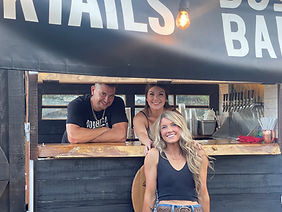[Free 2025 Guide] How to Start a Food Truck in New York
One should identify strategic locations and events in New York that attract a large crowd, ideal for a food truck business. Consider the weather and seasonal factors in New York when planning the operation schedule and menu for the food truck. Networking with other food truck owners in New York can provide valuable insights and opportunities for collaboration.


Insurance Coverage for Food Trailers in New York
Insurance Coverage for Food Trailers in New York
In New York, food trailers with a Gross Vehicle Weight Rating (GVWR) of 3,000 lbs or more must be registered. The registration fee is $18 for a one-year tag. To register a food trailer, you must present the following documents: a completed Vehicle Registration/Title Application (Form MV-82), proof of ownership (bill of sale or title), proof of insurance, and proof of identity. Trailers under 3,000 lbs may qualify for a simplified registration process. Farm-use trailers are exempt from registration, but they must meet safety requirements.
In New York, food trailers must be covered under the towing vehicle's liability insurance. However, food truck owners are advised to carry additional collision and comprehensive coverage for the trailer itself.
The minimum liability coverage required for the trailer is $25,000 per person and $50,000 per accident for bodily injury, and $10,000 for property damage.
Summarized Business Regulations for Cottage Food Laws in New York
In New York State, a Cottage Food Operation refers to a small-scale food business run from a home kitchen that produces certain low-risk foods for direct sale to consumers. This program allows individuals to make and sell specific types of food items, like baked goods, jams, and granola, without needing a commercial kitchen or extensive permits. However, there are limitations on annual sales, types of allowed products, and where these items can be sold, typically restricting sales to farmers' markets, roadside stands, and certain events.
Example of Successful Food Trucks in New York

Av's food truck
Asian fusion

Big D's Grub
Fast food

DF Nigerian Food Truck
West African food

How to Register and Title Your Food Truck in New York [2025]
In New York, food trailers with a Gross Vehicle Weight Rating (GVWR) of 3,000 lbs or more must be registered. The registration fee is $18 for a one-year tag. To register a food trailer, you must present the following documents: a completed Vehicle Registration/Title Application (Form MV-82), proof of ownership (bill of sale or title), proof of insurance, and proof of identity. Trailers under 3,000 lbs may qualify for a simplified registration process. Farm-use trailers are exempt from registration, but they must meet safety requirements.

New York Food Trailer Braking System Requirements
In New York, trailers with a GVWR over 3,000 lbs are required to have a braking system. Electric brakes are the most common and are acceptable for food trailers.
Trailers under 3,000 lbs do not require a braking system. If the trailer is 10,000 lbs or more, it must have an independent braking system with a backup.
Lighting, Reflectors, and Safety Chains Requirements for Food Trailers in New York
Food trailers in New York must be equipped with two red tail lights visible from 500 feet and amber reflectors on each side of the trailer. The trailer must also have functioning brake lights and turn signals. Additionally, the trailer must be equipped with at least one safety chain, which must be rated for the GVWR of the trailer.

![Fast Track to Six-Figure Food Truck Profit in New York [2025 Bundle with Guides, Calculators and Full Business Plan]](https://static.wixstatic.com/media/aec654_84801fc04b734fea9cb53e3ab365f21b~mv2.jpg/v1/fill/w_562,h_375,al_c,q_80,usm_0.66_1.00_0.01,enc_avif,quality_auto/aec654_84801fc04b734fea9cb53e3ab365f21b~mv2.jpg)


















